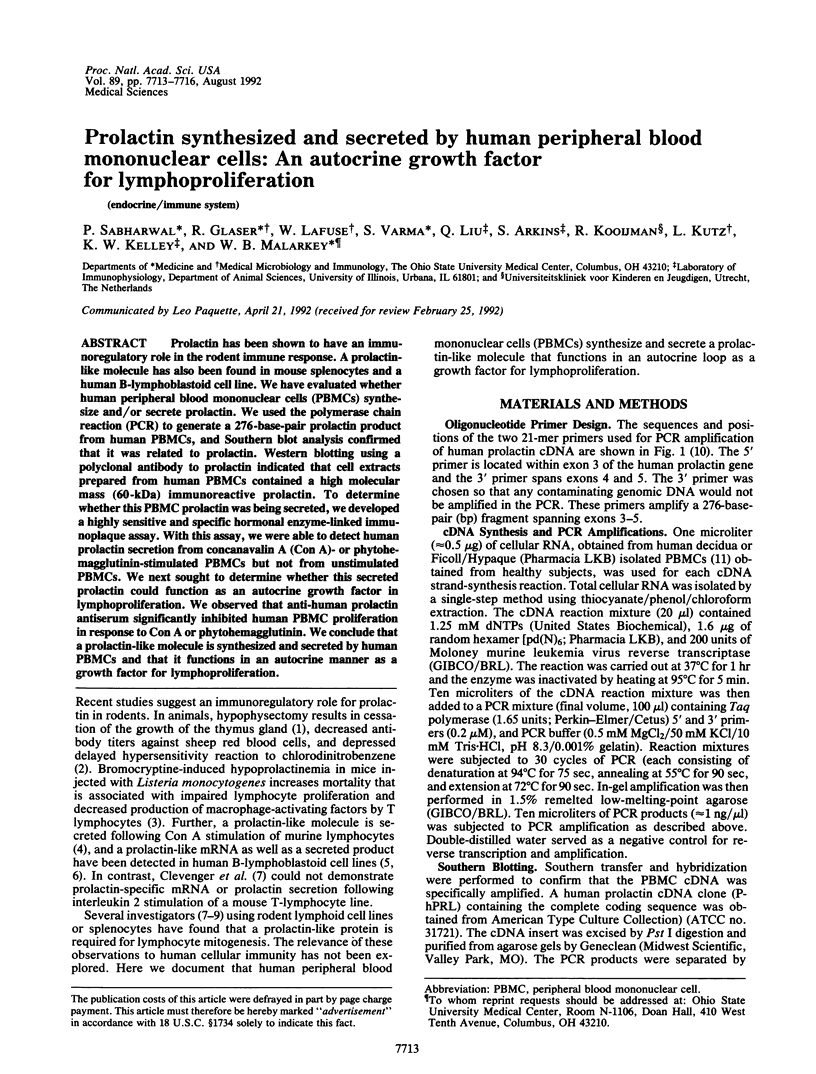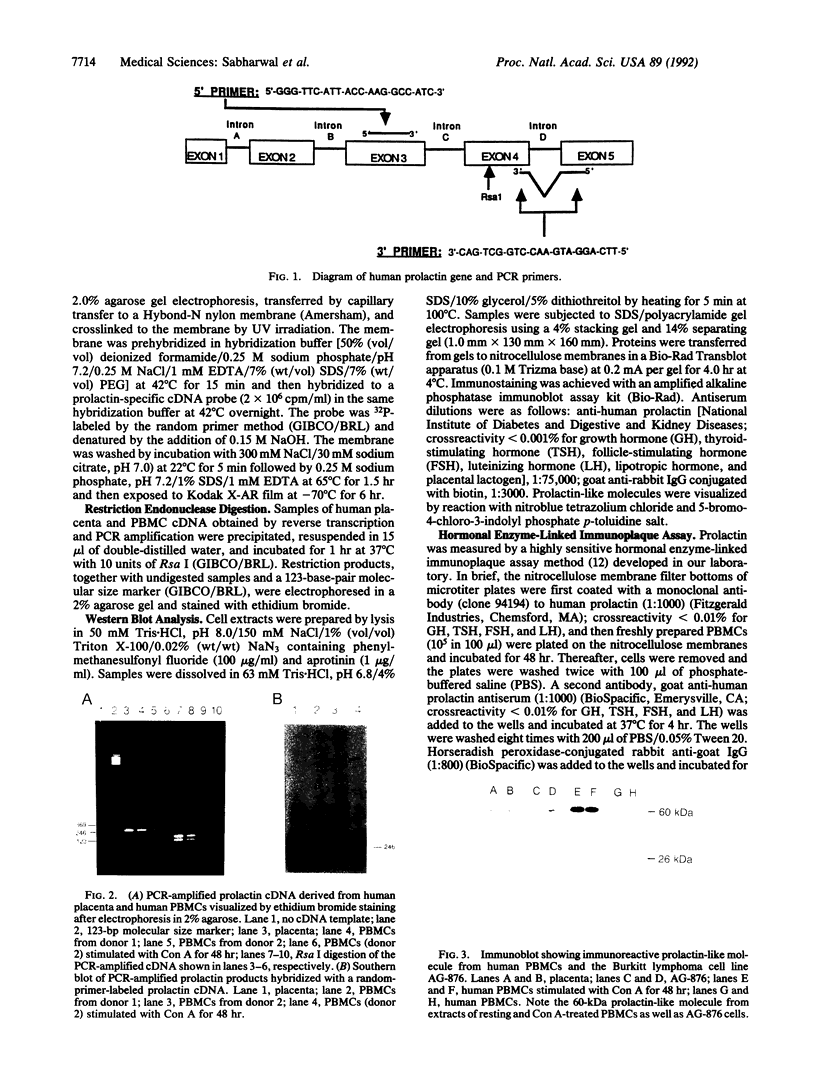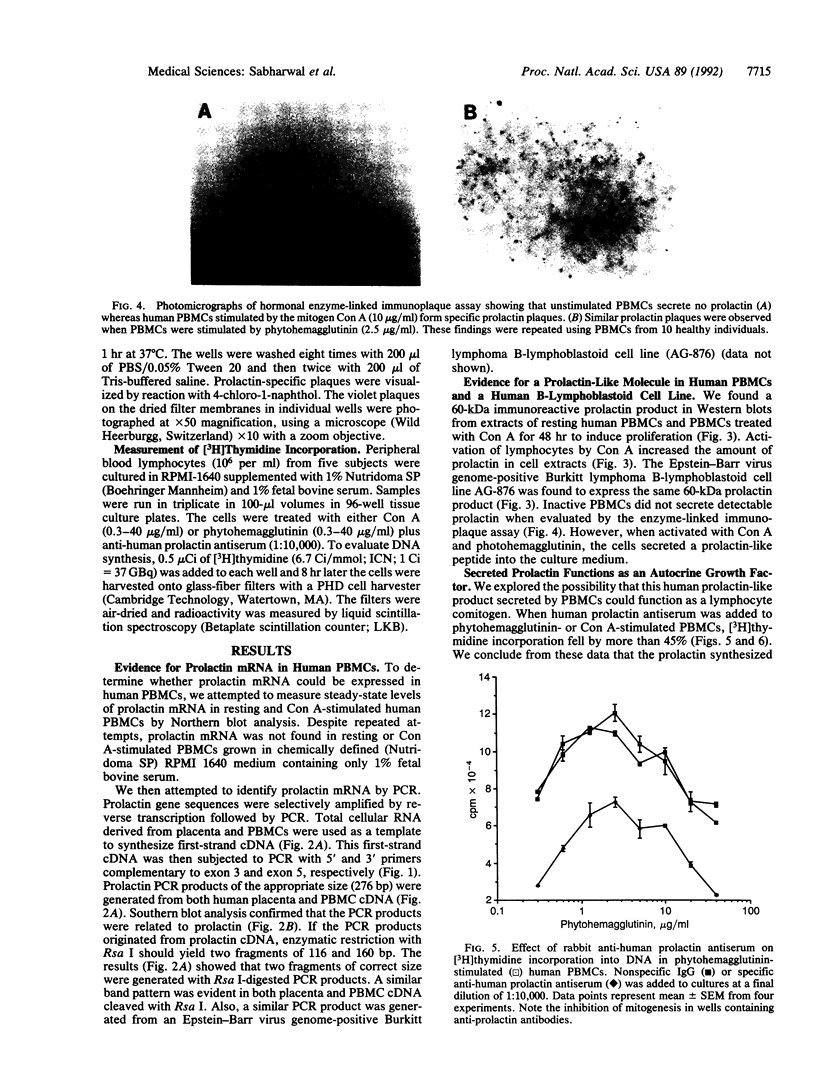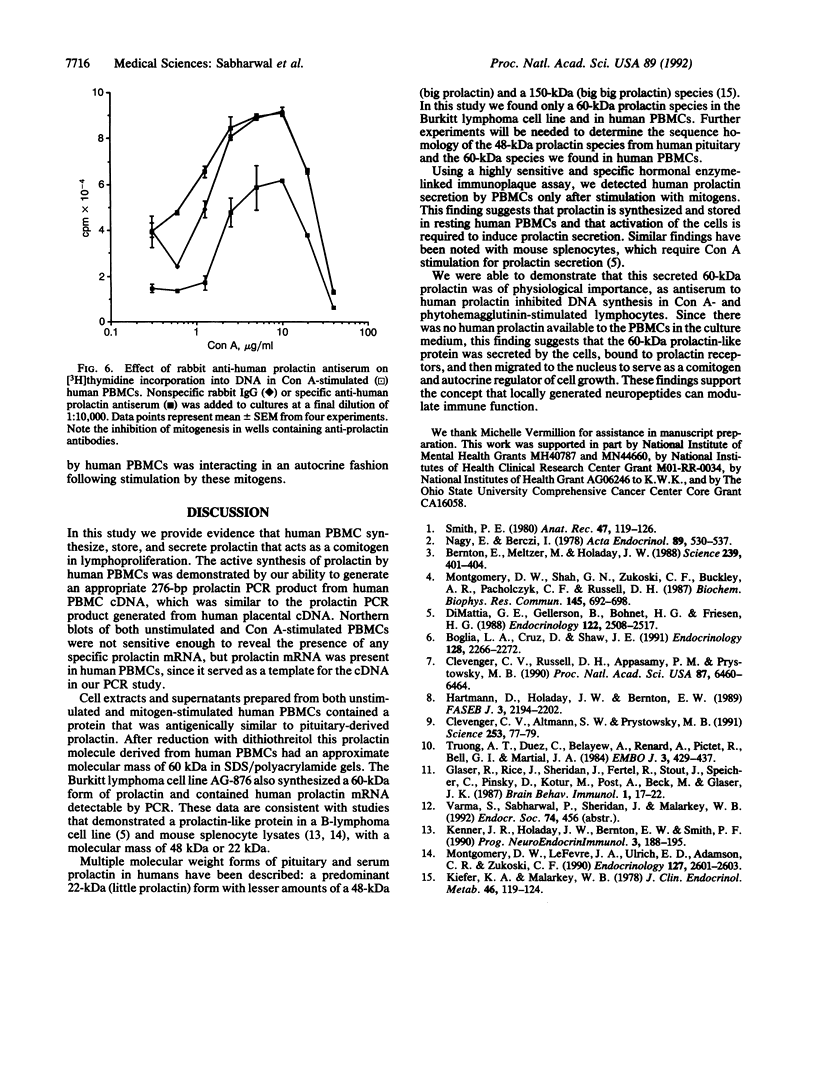Abstract
Prolactin has been shown to have an immunoregulatory role in the rodent immune response. A prolactin-like molecule has also been found in mouse splenocytes and a human B-lymphoblastoid cell line. We have evaluated whether human peripheral blood mononuclear cells (PBMCs) synthesize and/or secrete prolactin. We used the polymerase chain reaction (PCR) to generate a 276-base-pair prolactin product from human PBMCs, and Southern blot analysis confirmed that it was related to prolactin. Western blotting using a polyclonal antibody to prolactin indicated that cell extracts prepared from human PBMCs contained a high molecular mass (60-kDa) immunoreactive prolactin. To determine whether this PBMC prolactin was being secreted, we developed a highly sensitive and specific hormonal enzyme-linked immunoplaque assay. With this assay, we were able to detect human prolactin secretion from concanavalin A (Con A)- or phytohemagglutinin-stimulated PBMCs but not from unstimulated PBMCs. We next sought to determine whether this secreted prolactin could function as an autocrine growth factor in lymphoproliferation. We observed that anti-human prolactin antiserum significantly inhibited human PBMC proliferation in response to Con A or phytohemagglutinin. We conclude that a prolactin-like molecule is synthesized and secreted by human PBMCs and that it functions in an autocrine manner as a growth factor for lymphoproliferation.
Full text
PDF



Images in this article
Selected References
These references are in PubMed. This may not be the complete list of references from this article.
- Baglia L. A., Cruz D., Shaw J. E. An Epstein-Barr virus-negative Burkitt lymphoma cell line (sfRamos) secretes a prolactin-like protein during continuous growth in serum-free medium. Endocrinology. 1991 May;128(5):2266–2272. doi: 10.1210/endo-128-5-2266. [DOI] [PubMed] [Google Scholar]
- Bernton E. W., Meltzer M. S., Holaday J. W. Suppression of macrophage activation and T-lymphocyte function in hypoprolactinemic mice. Science. 1988 Jan 22;239(4838):401–404. doi: 10.1126/science.3122324. [DOI] [PubMed] [Google Scholar]
- Clevenger C. V., Altmann S. W., Prystowsky M. B. Requirement of nuclear prolactin for interleukin-2--stimulated proliferation of T lymphocytes. Science. 1991 Jul 5;253(5015):77–79. doi: 10.1126/science.2063207. [DOI] [PubMed] [Google Scholar]
- Clevenger C. V., Russell D. H., Appasamy P. M., Prystowsky M. B. Regulation of interleukin 2-driven T-lymphocyte proliferation by prolactin. Proc Natl Acad Sci U S A. 1990 Aug;87(16):6460–6464. doi: 10.1073/pnas.87.16.6460. [DOI] [PMC free article] [PubMed] [Google Scholar]
- DiMattia G. E., Gellersen B., Bohnet H. G., Friesen H. G. A human B-lymphoblastoid cell line produces prolactin. Endocrinology. 1988 Jun;122(6):2508–2517. doi: 10.1210/endo-122-6-2508. [DOI] [PubMed] [Google Scholar]
- Hartmann D. P., Holaday J. W., Bernton E. W. Inhibition of lymphocyte proliferation by antibodies to prolactin. FASEB J. 1989 Aug;3(10):2194–2202. doi: 10.1096/fasebj.3.10.2787766. [DOI] [PubMed] [Google Scholar]
- Kiefer K. A., Malarkey W. B. Size heterogeneity of human prolactin in CSF and serum: experimental conditions that alter gel filtration patterns. J Clin Endocrinol Metab. 1978 Jan;46(1):119–124. doi: 10.1210/jcem-46-1-119. [DOI] [PubMed] [Google Scholar]
- Montgomery D. W., LeFevre J. A., Ulrich E. D., Adamson C. R., Zukoski C. F. Identification of prolactin-like proteins synthesized by normal murine lymphocytes. Endocrinology. 1990 Nov;127(5):2601–2603. doi: 10.1210/endo-127-5-2601. [DOI] [PubMed] [Google Scholar]
- Montgomery D. W., Zukoski C. F., Shah G. N., Buckley A. R., Pacholczyk T., Russell D. H. Concanavalin A-stimulated murine splenocytes produce a factor with prolactin-like bioactivity and immunoreactivity. Biochem Biophys Res Commun. 1987 Jun 15;145(2):692–698. doi: 10.1016/0006-291x(87)91020-5. [DOI] [PubMed] [Google Scholar]
- Nagy E., Berczi I. Immunodeficiency in hypophysectomized rats. Acta Endocrinol (Copenh) 1978 Nov;89(3):530–537. doi: 10.1530/acta.0.0890530. [DOI] [PubMed] [Google Scholar]
- Truong A. T., Duez C., Belayew A., Renard A., Pictet R., Bell G. I., Martial J. A. Isolation and characterization of the human prolactin gene. EMBO J. 1984 Feb;3(2):429–437. doi: 10.1002/j.1460-2075.1984.tb01824.x. [DOI] [PMC free article] [PubMed] [Google Scholar]





